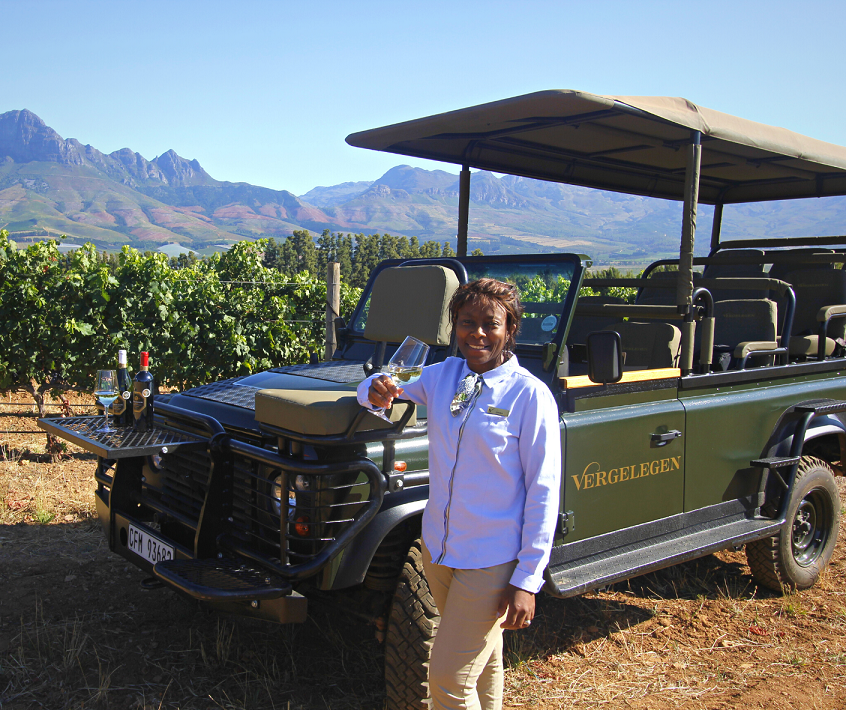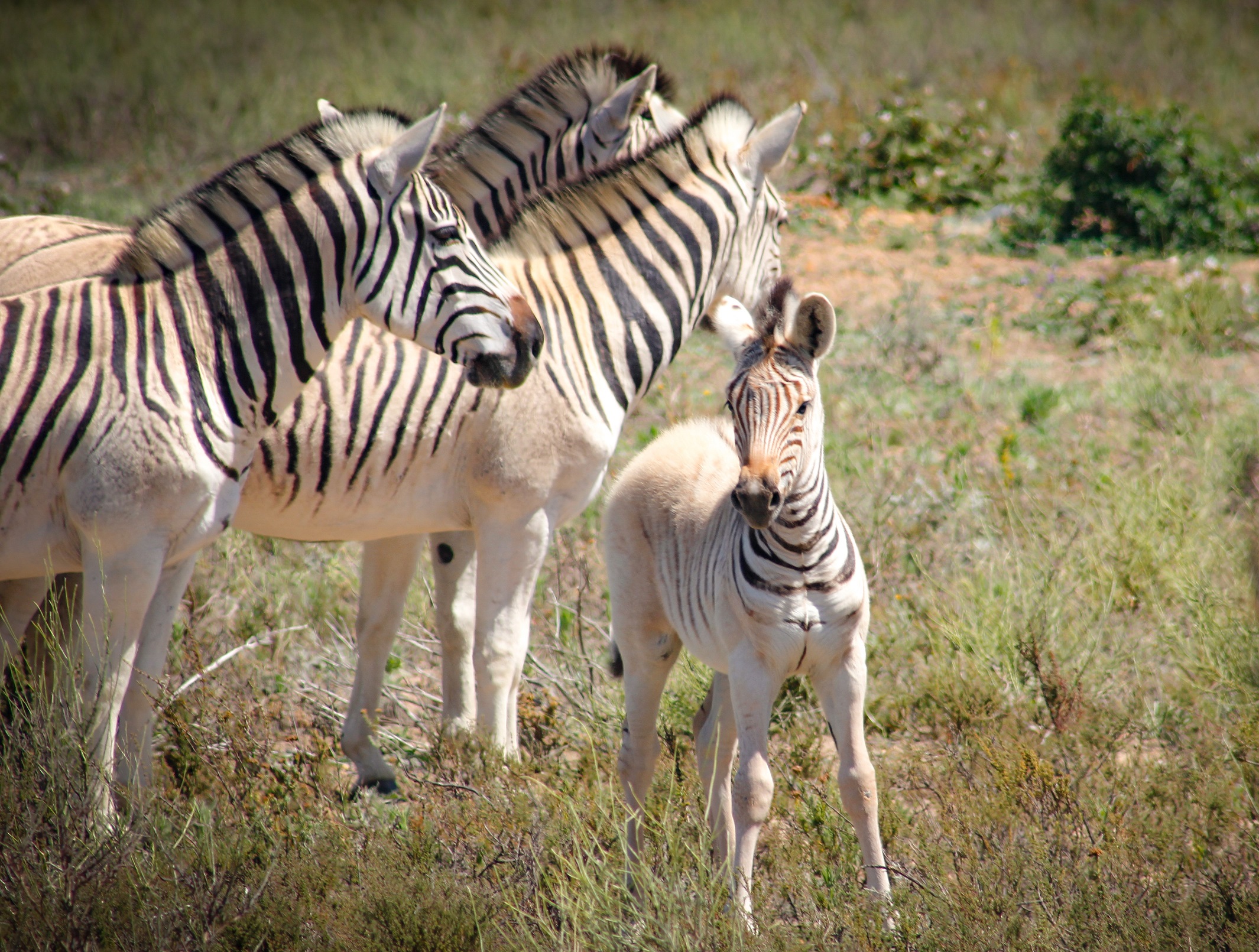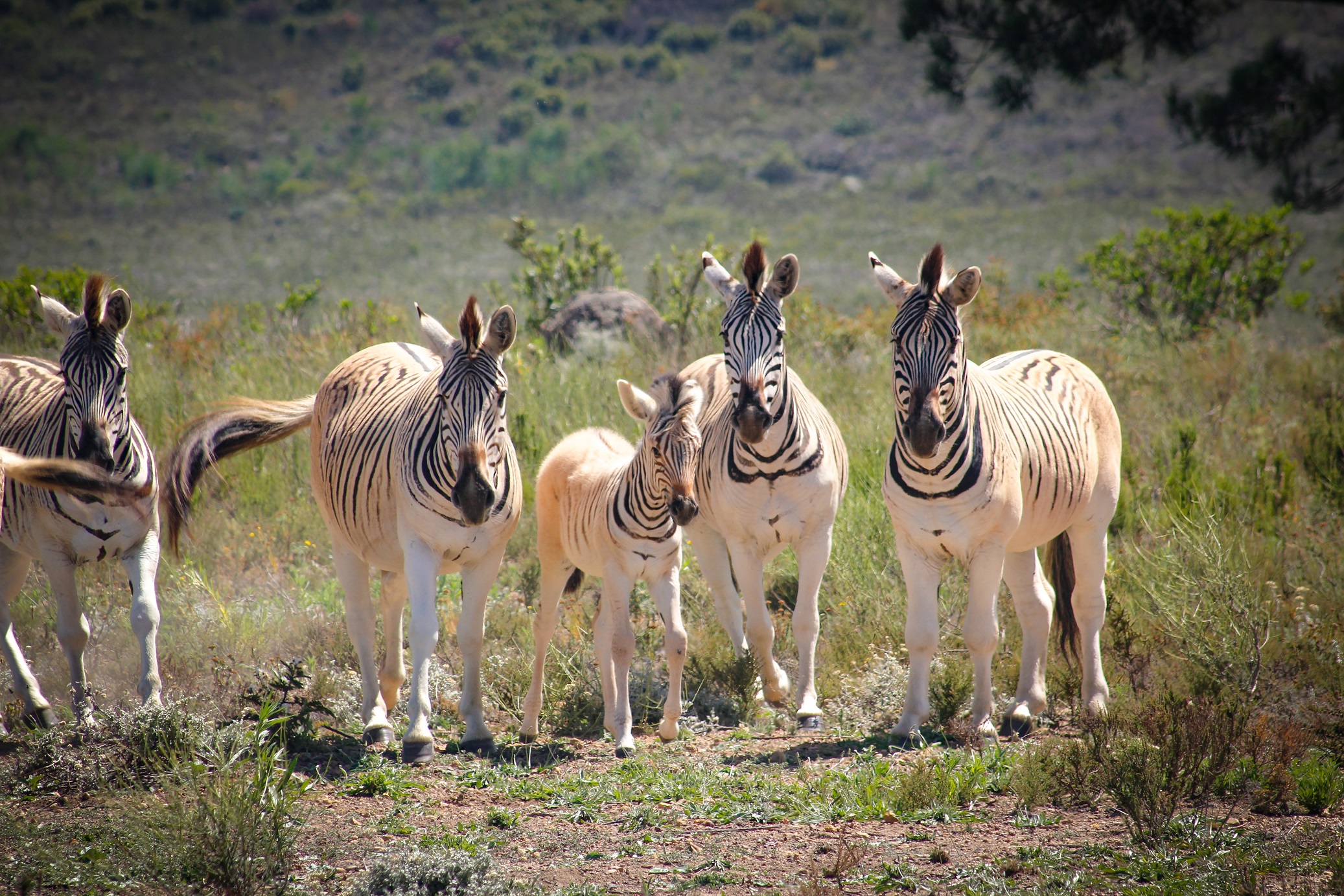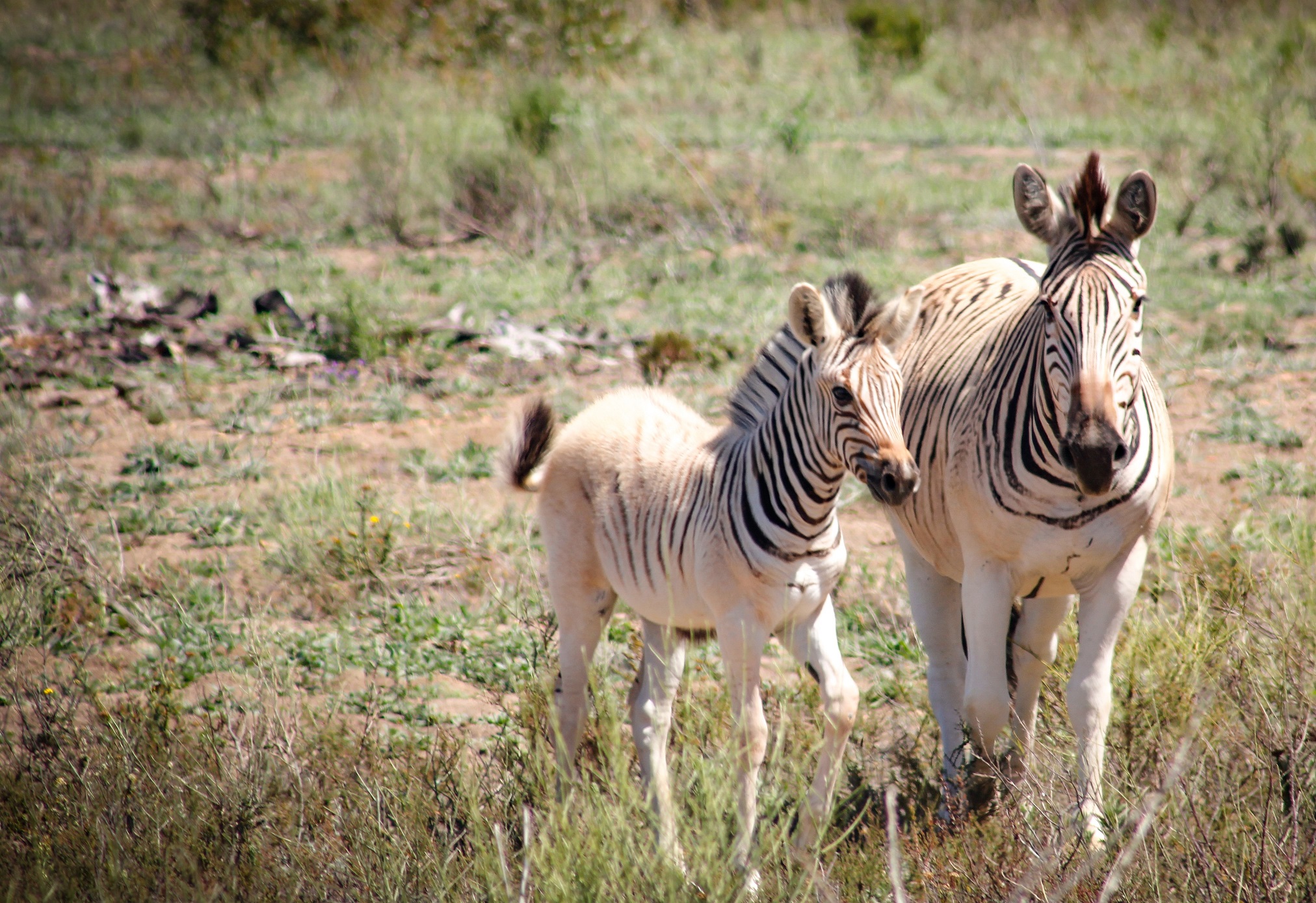The young Rau quagga with other members of the herd at Vergelegen.
Vergelegen wine estate in Somerset West, renowned for its environmental programmes, is celebrating the birth of a young ‘Rau’ quagga, a rare zebra sub-species.
The arrival of the healthy youngster is a milestone in an ambitious project, initiated by a dedicated group of conservationists in 1987, to breed an animal resembling as closely as possible the quagga. This animal was hunted to extinction in the second half of the 19th century and the last known mare died in Amsterdam Zoo in 1883.
The young Vergelegen foal was born on 14 December after a 12-month gestation period. It was left undisturbed to bond with the other seven quagga and its sex has not yet been determined.
“This youngster appears very relaxed and has been accepted as one of the herd,” says Eben Olderwagen, Environmental Project Manager at the 323-year-old estate. “It has grown about 15cm taller in a month and has been spotted nibbling lucerne, in addition to suckling from its mother.”
Quagga were shorter and stockier than Southern Plains zebras, with a pale brown hide and black markings, unlike the white hide and black markings of other Plains zebras. Quagga usually have stripes on the head, neck and front portion of their bodies only.
The quagga at Vergelegen, introduced from Pampoenvlei in the Atlantis/ Darling area in May last year, are located in a 180 hectare reserve with lush natural grazing, a mix of renosterbos, Boland granite fynbos and various grasses.
Olderwagen says management hopes that this founder herd at Vergelegen will continue to breed and, after about two years, selected quagga will be exchanged with others in the programme. This will prevent in-breeding and reinforce the quest to breed quagga as near as possible to the original species.
Visitors have the opportunity to spot the quagga by booking a place on the estate’s popular guided game drives. These take visitors through the Vergelegen nature reserve, with possible sightings of the estate’s Nguni cattle, bontebok, quagga and five eland.
Vergelegen is situated in one of the richest floral regions of the world and in 2018 completed a 14-year, privately funded alien vegetation clearing programme. Some 2200 hectares were cleared, of which 1900 hectares have been declared a nature reserve with the same status as the Kruger National Park.
Management plans to continue introducing historically naturally occurring species at Vergelegen, said Olderwagen.
Vergelegen Environmental Tour
The environmental tour is weather permitting, costs R350 pp and departs from the tasting room at Vergelegen at 10h00. Duration is approximately 1.5 hours.
Phone 021 847 2122 for bookings and find out more https://vergelegen.co.za/experiences/environmental-tours/








